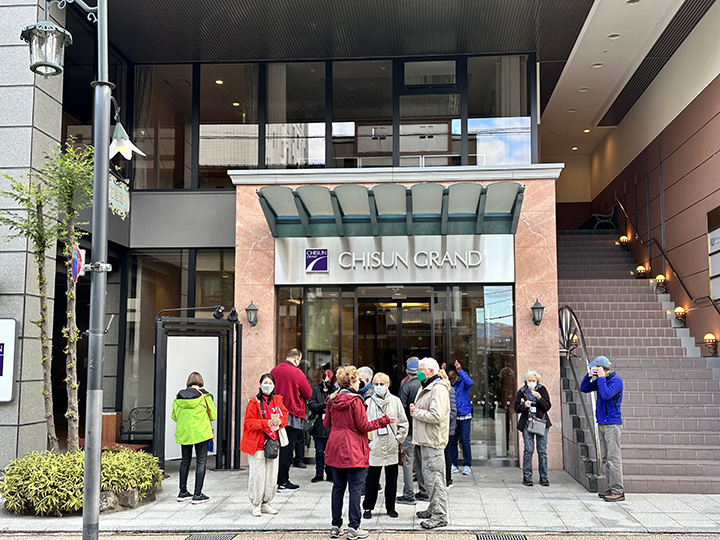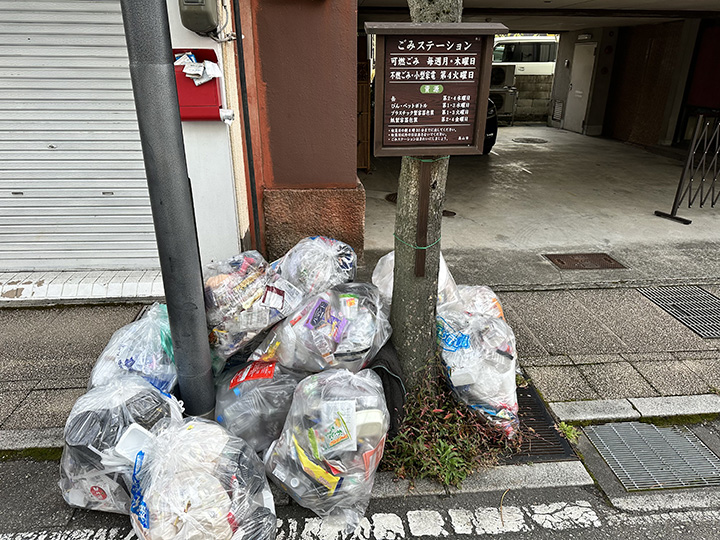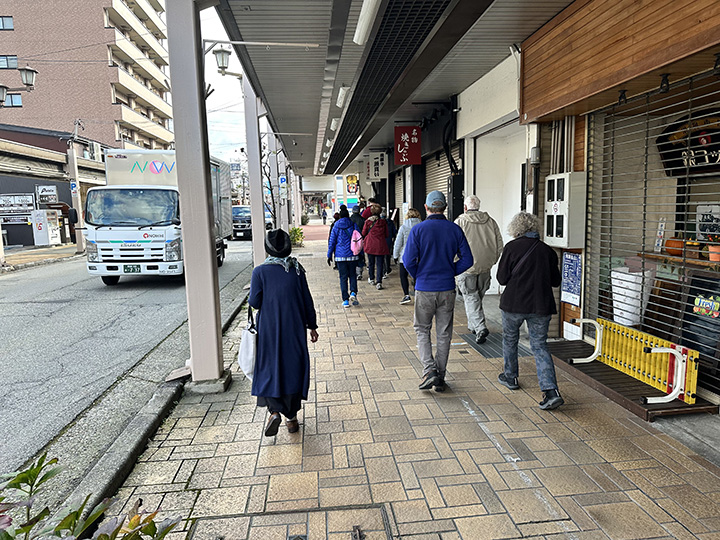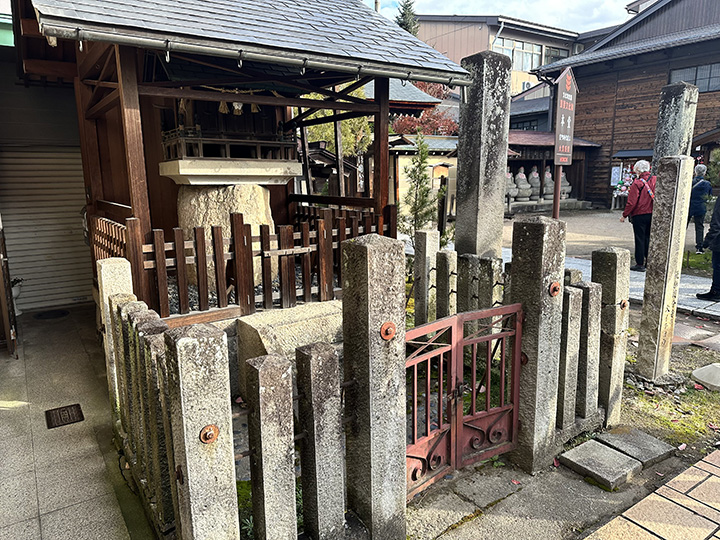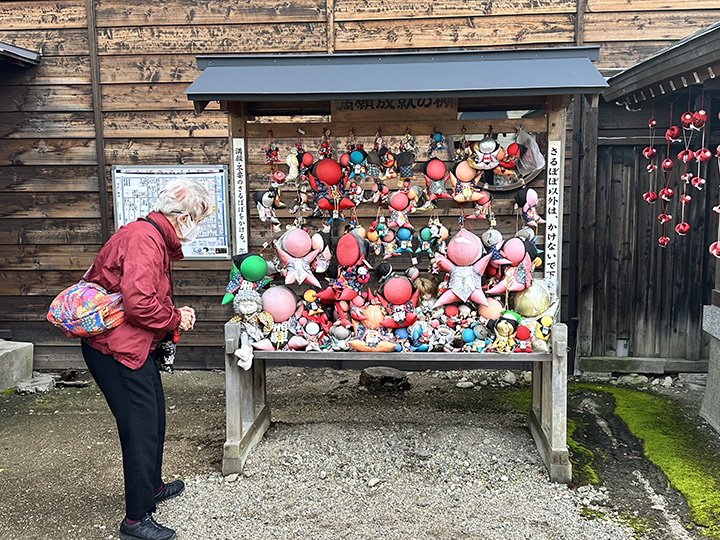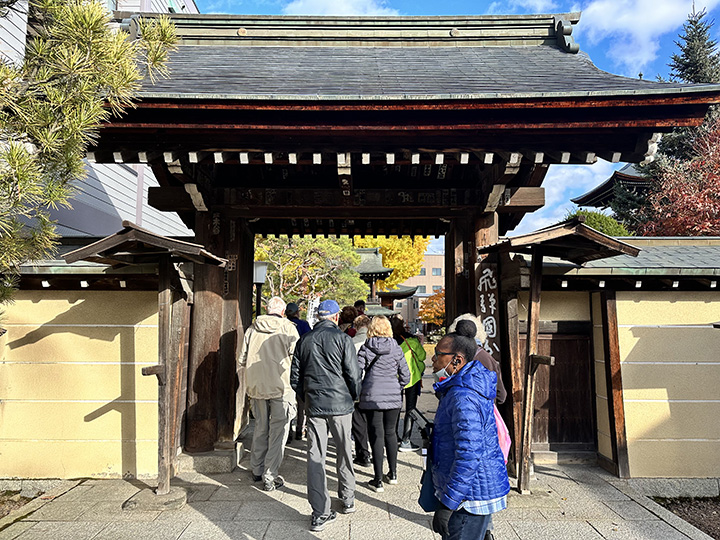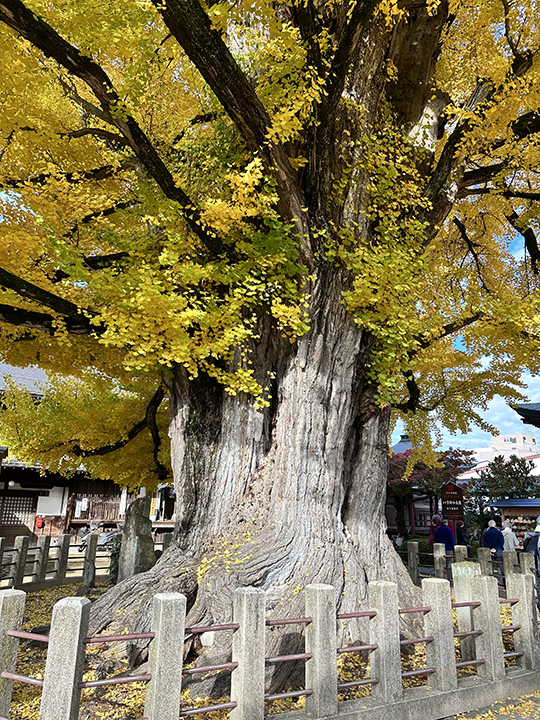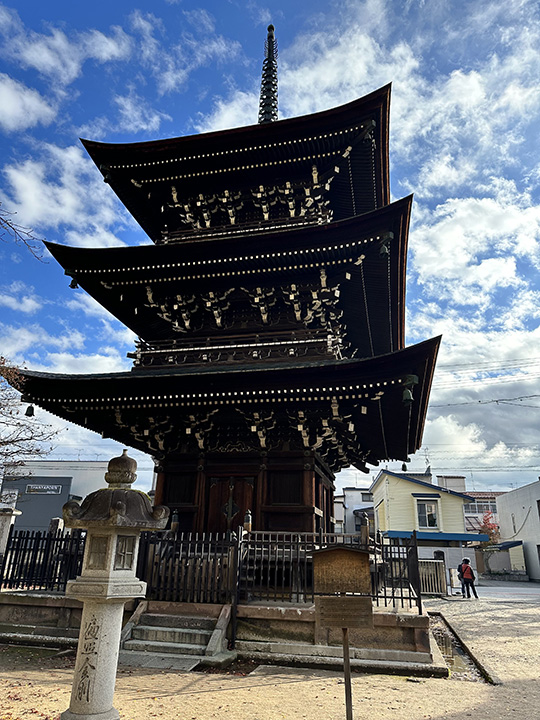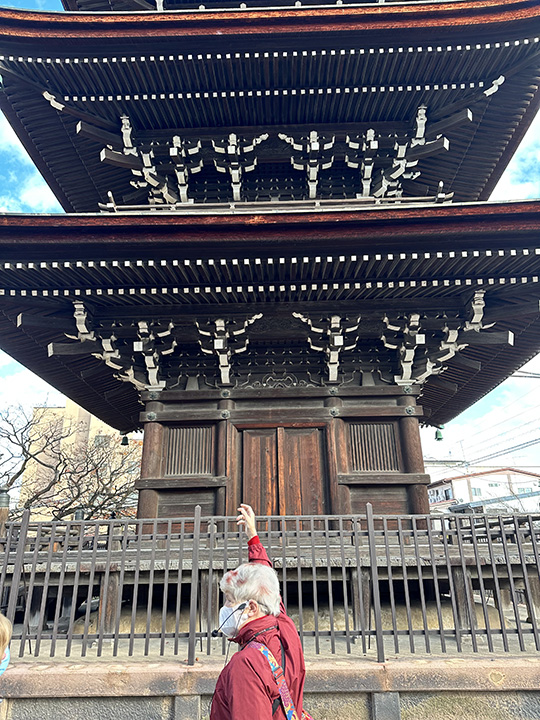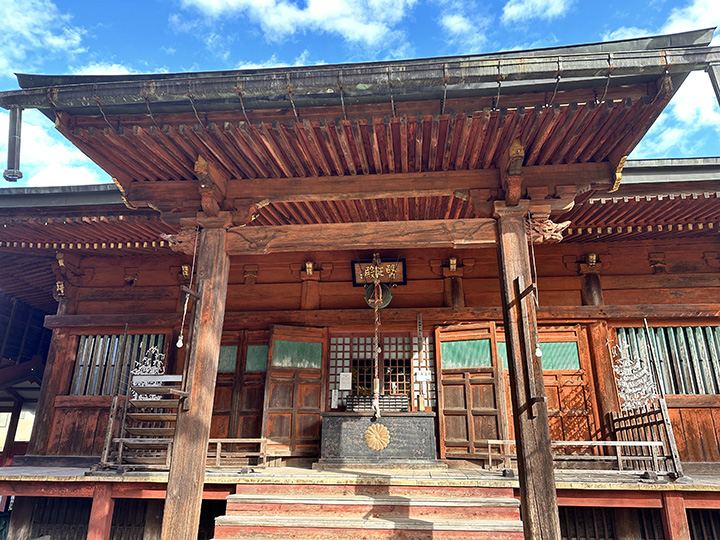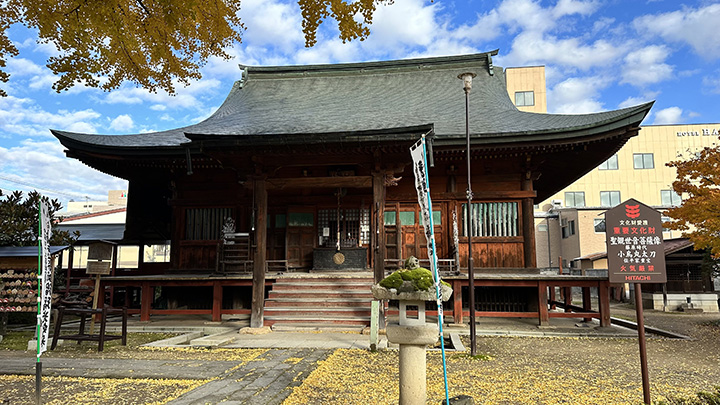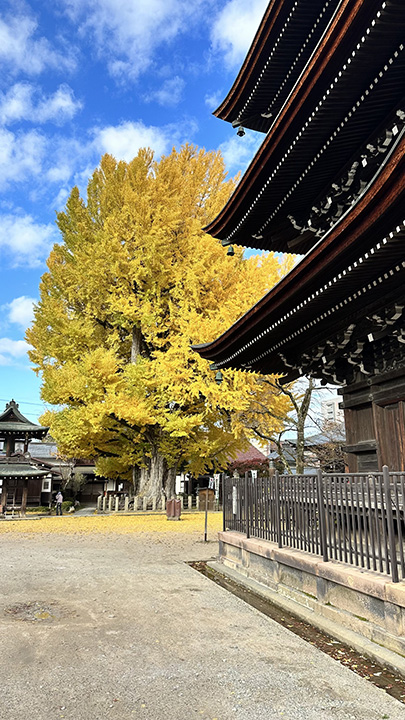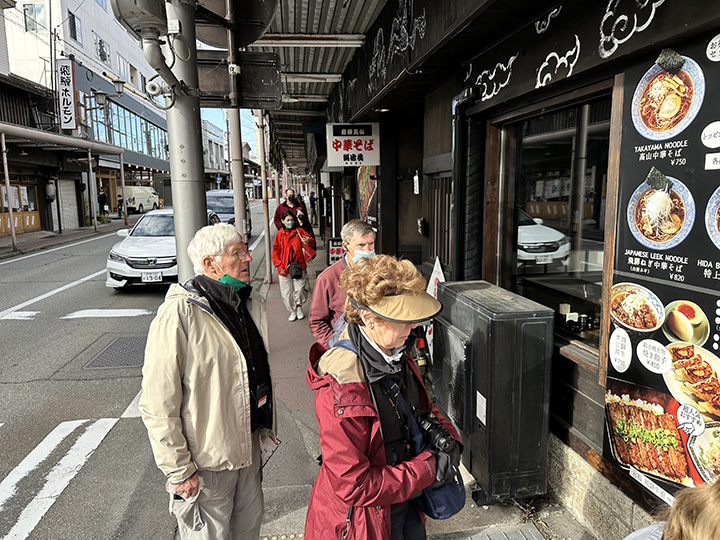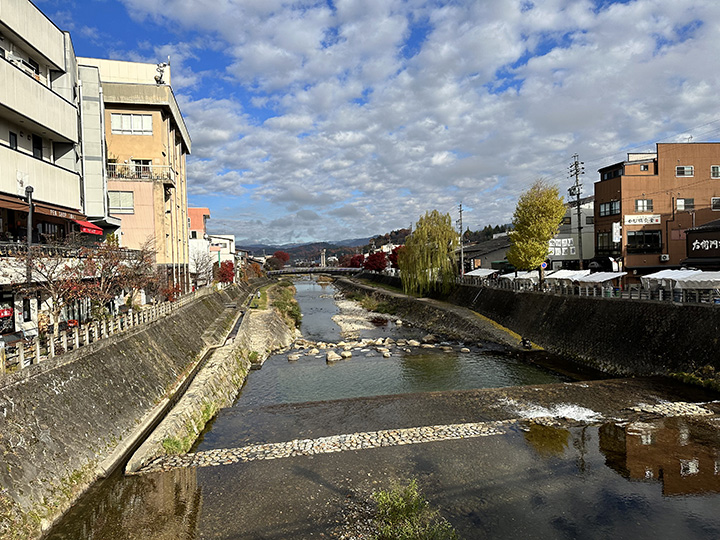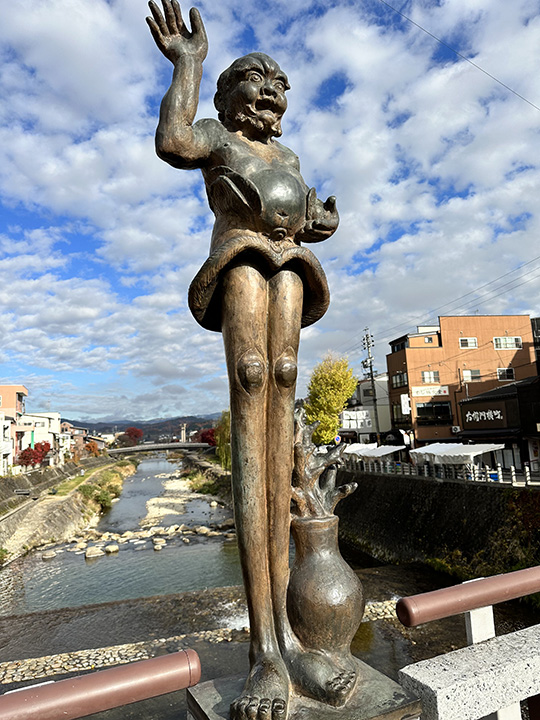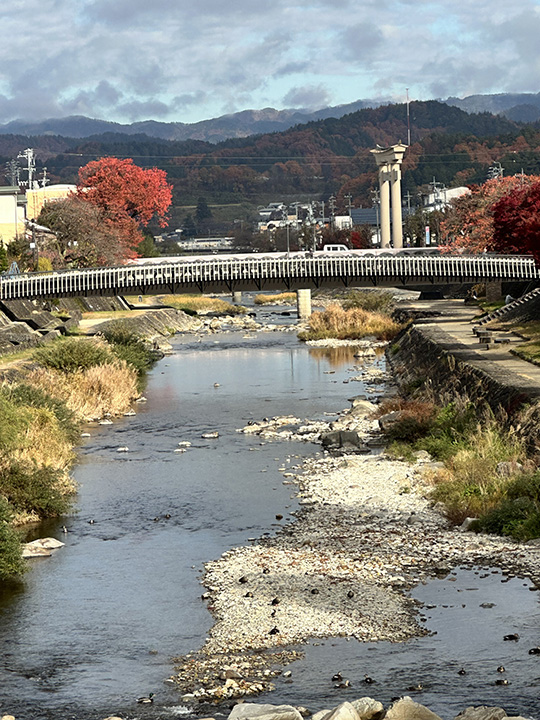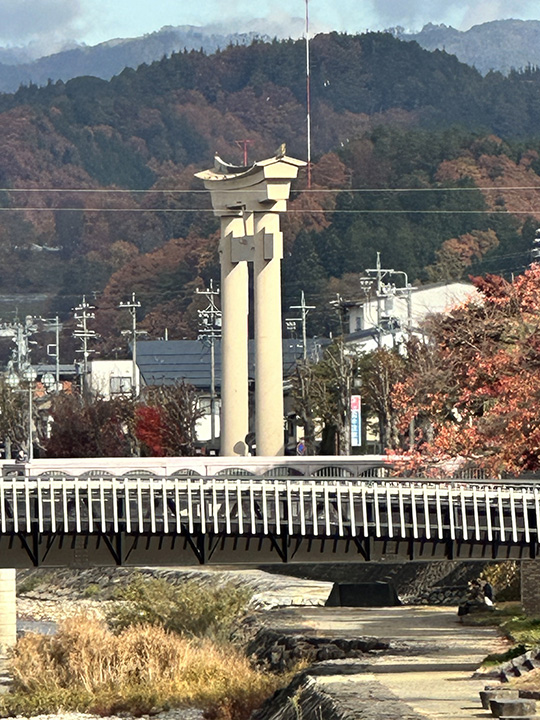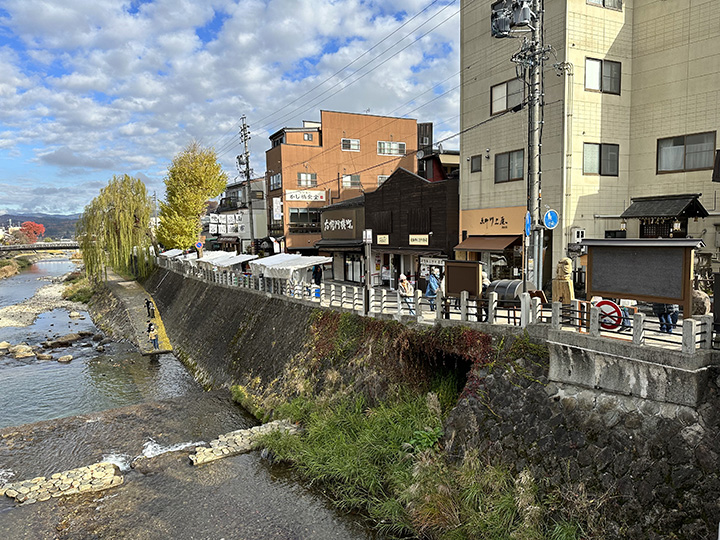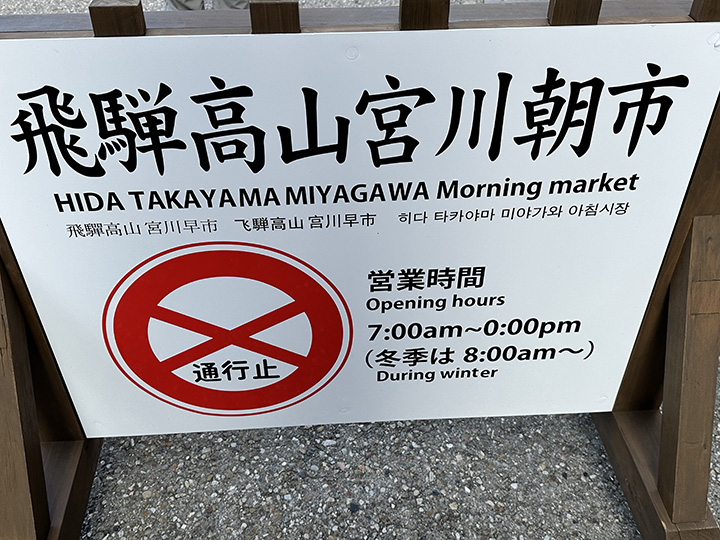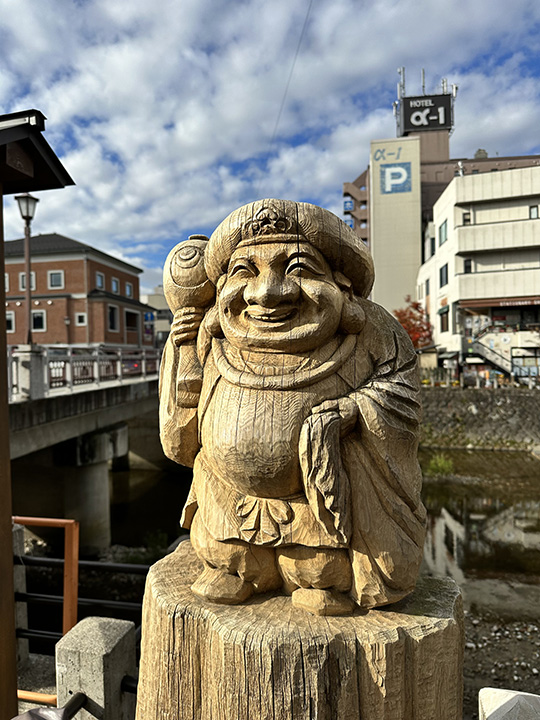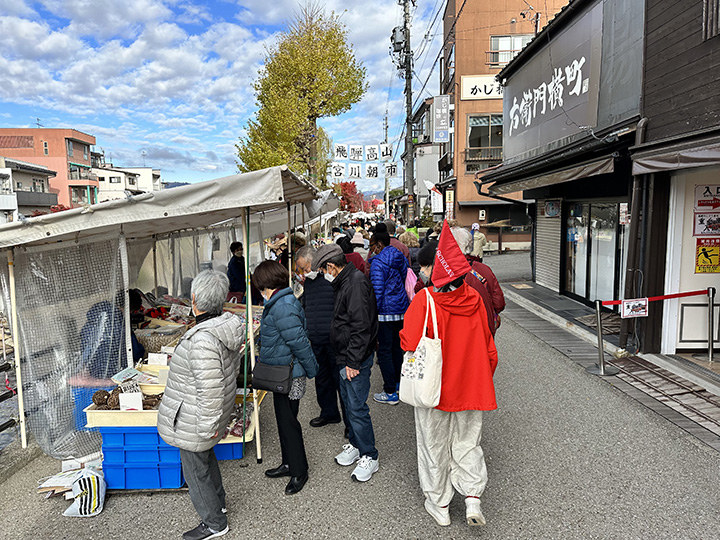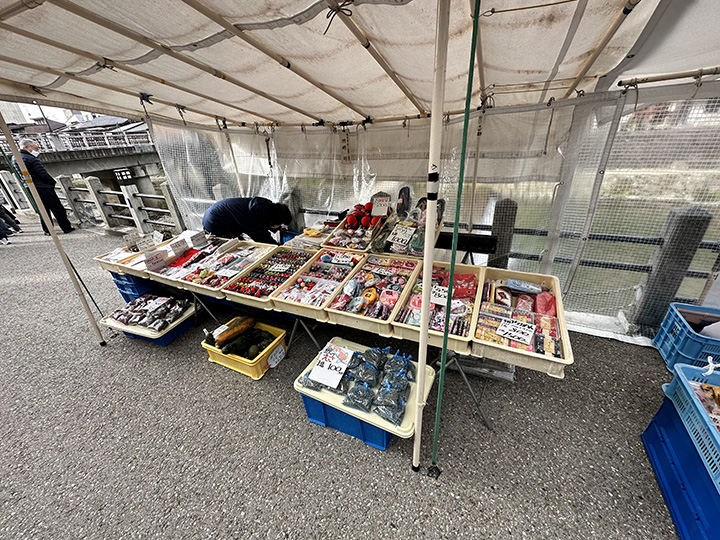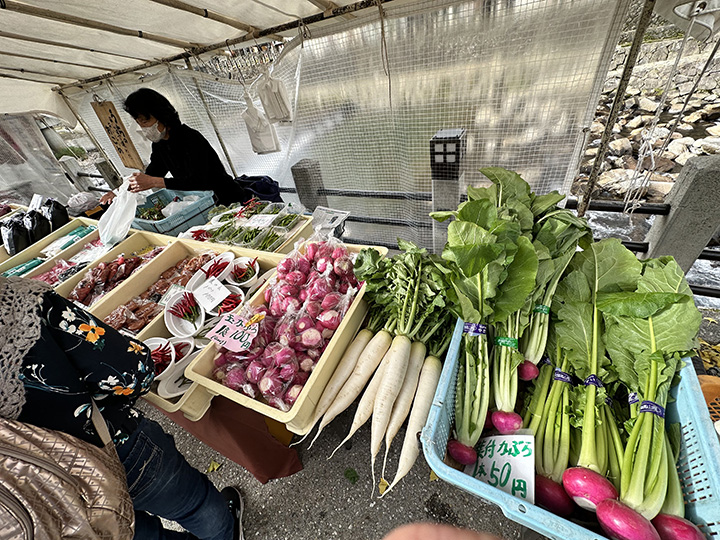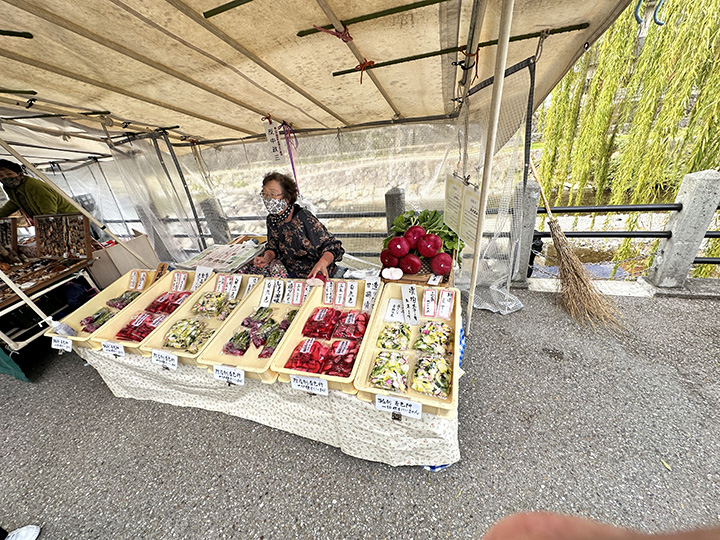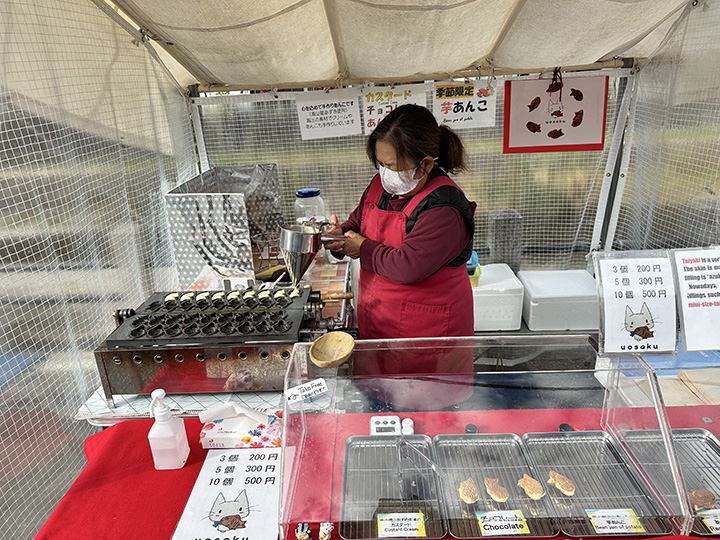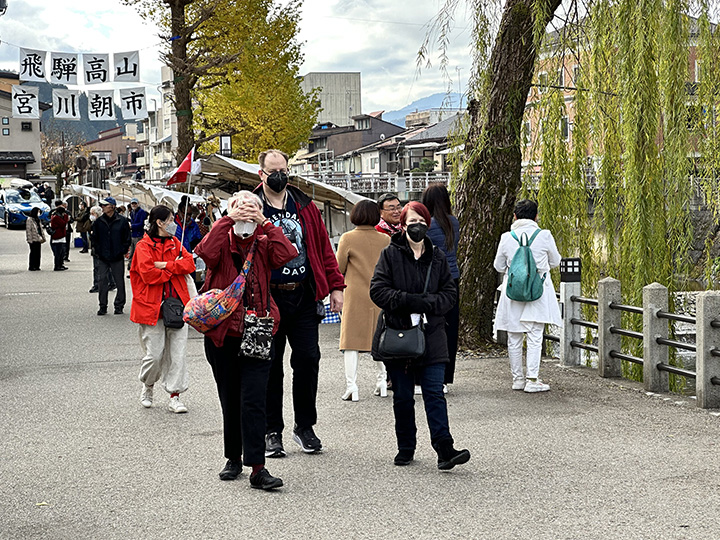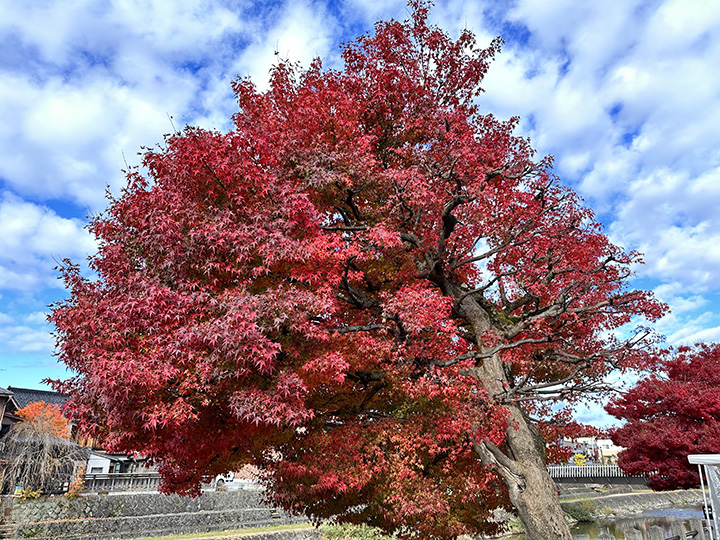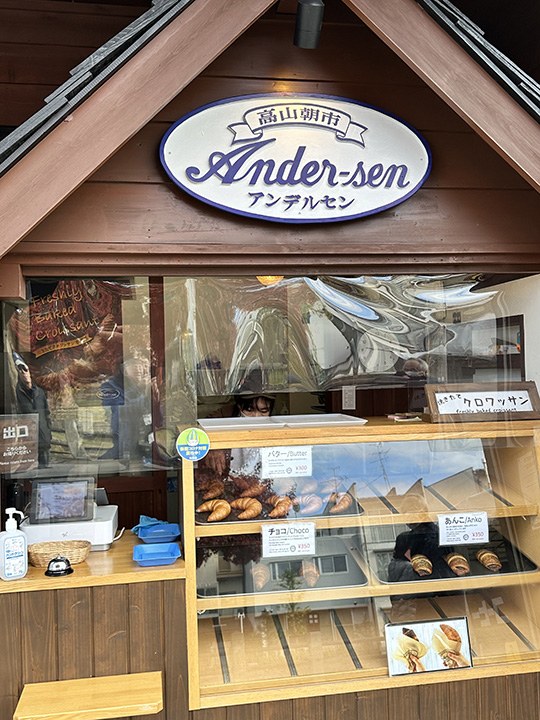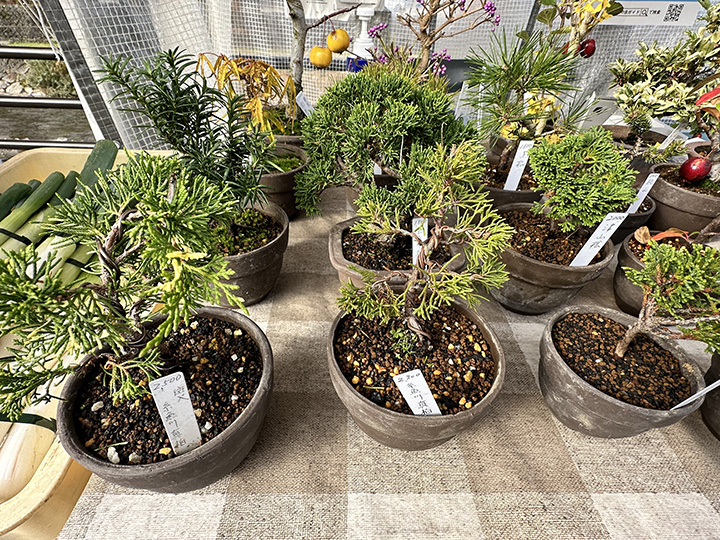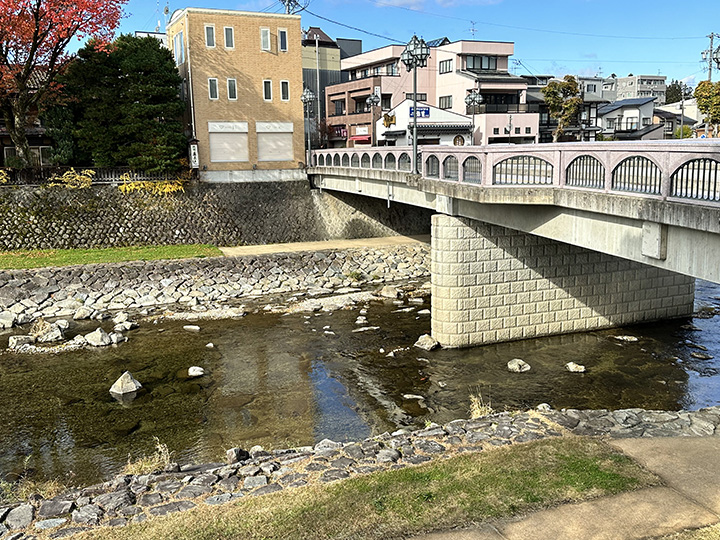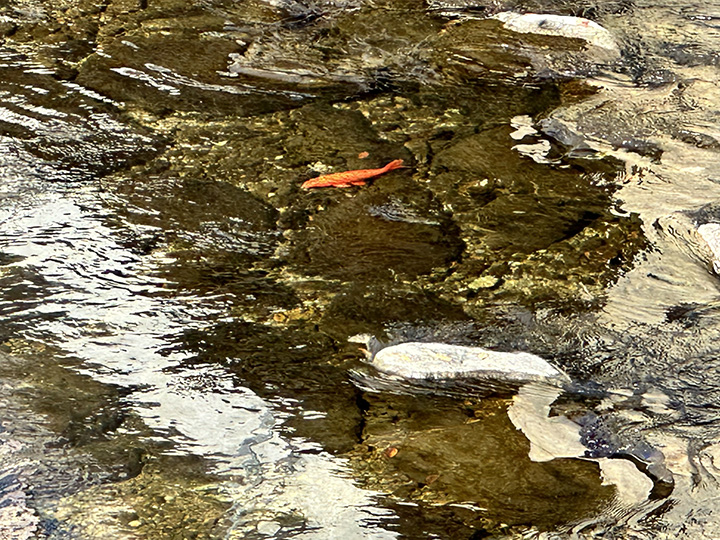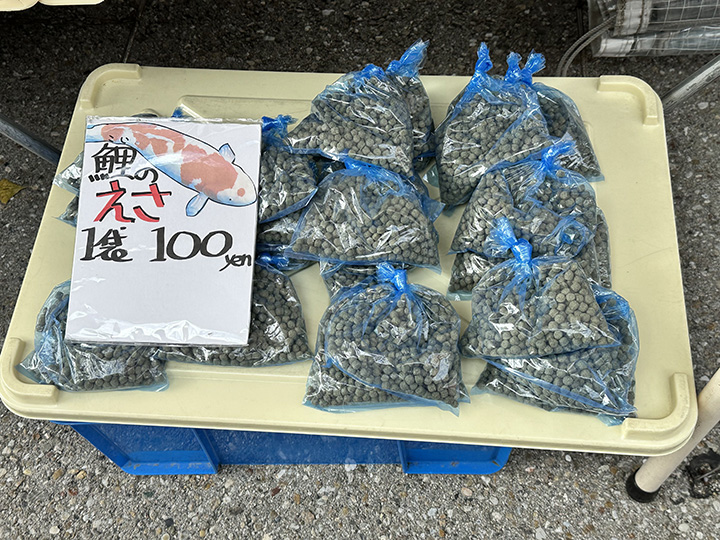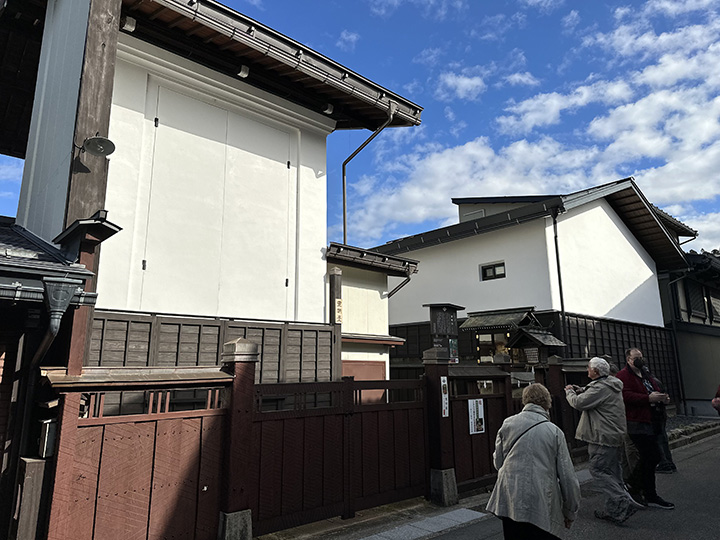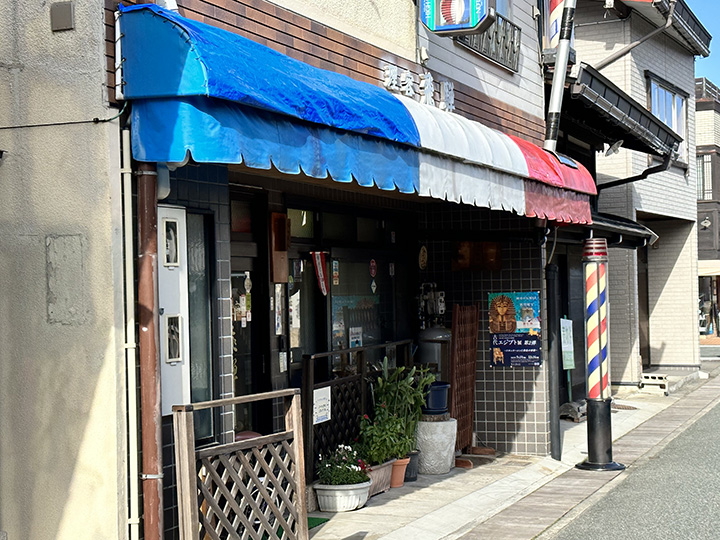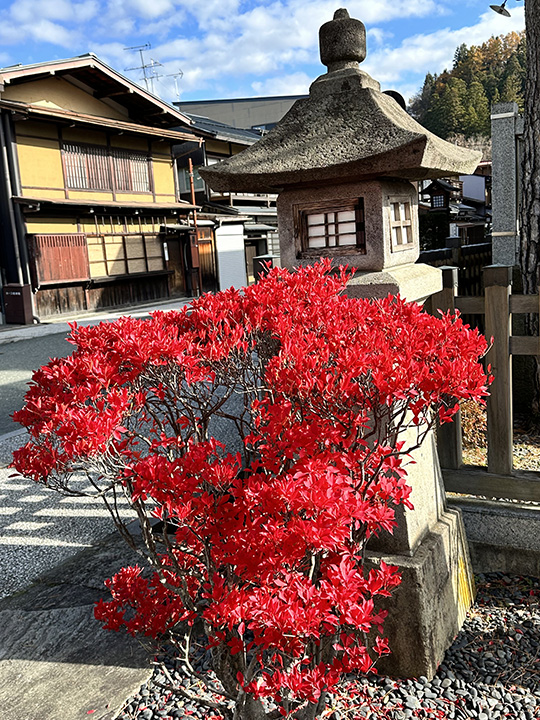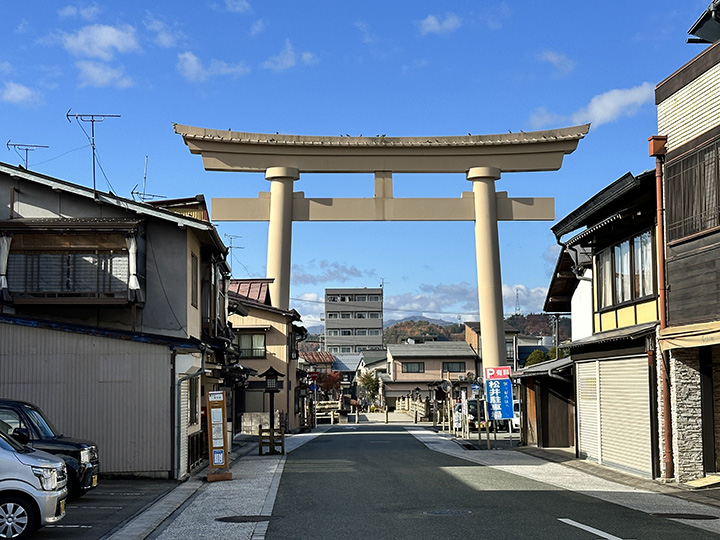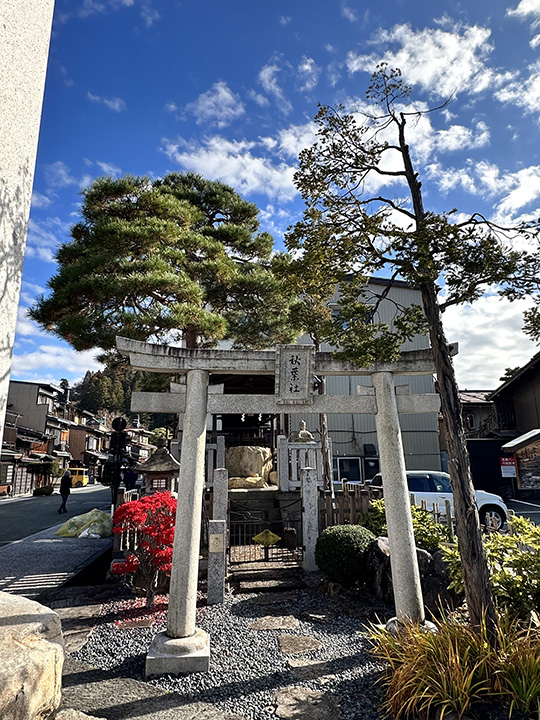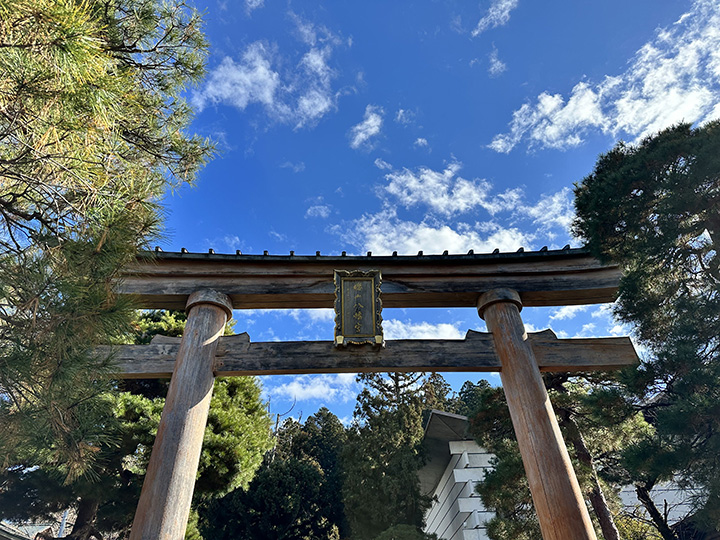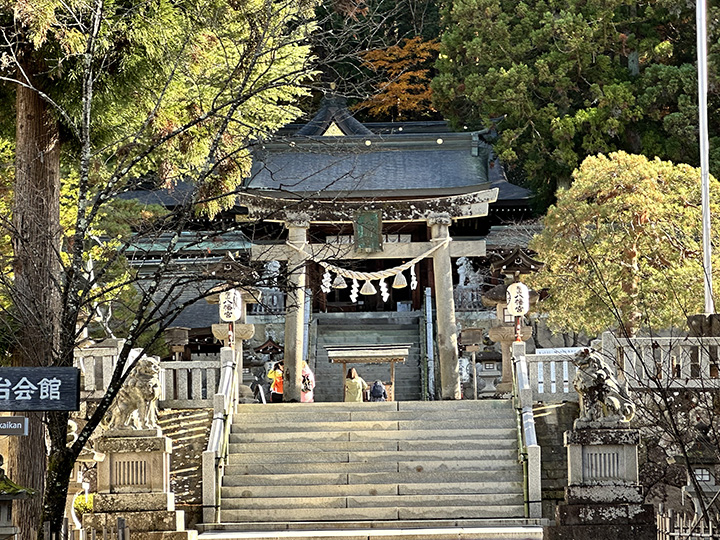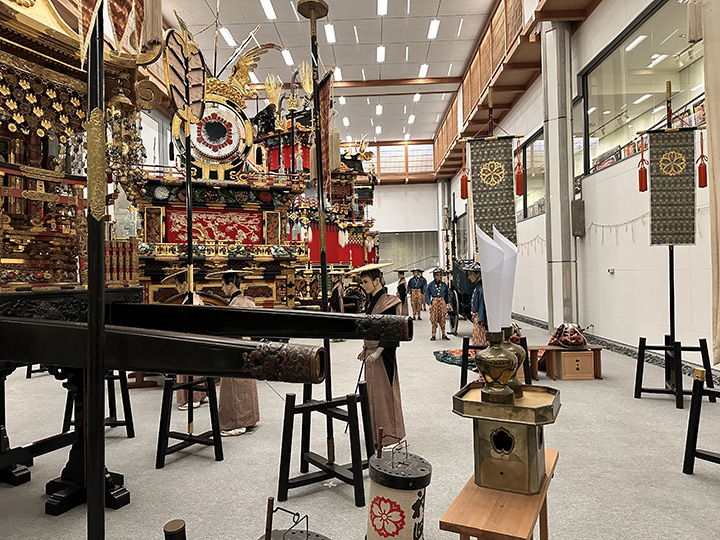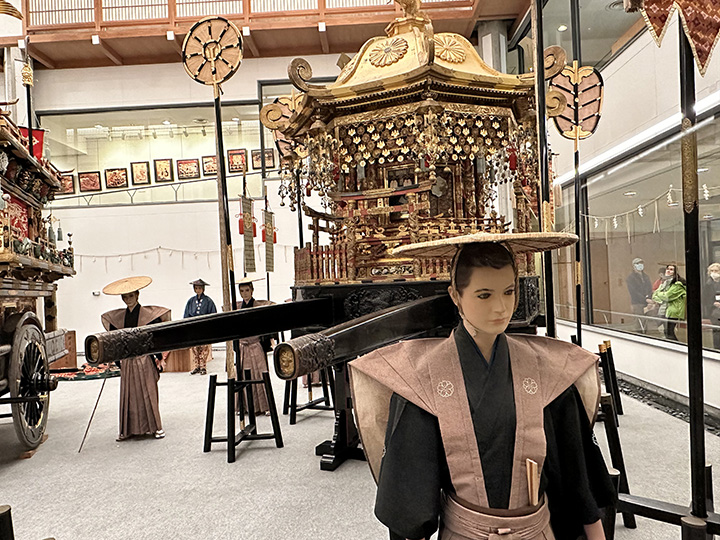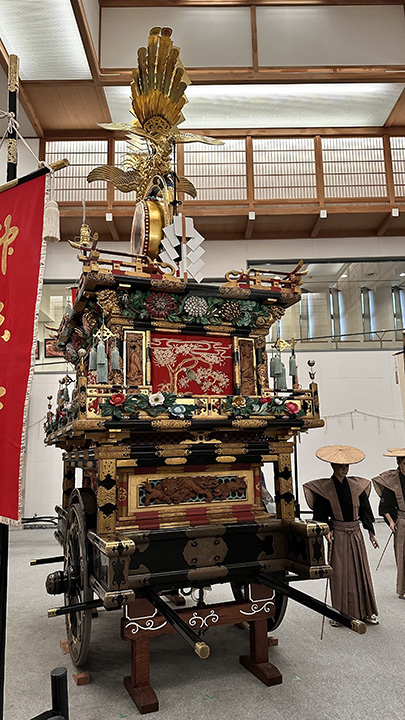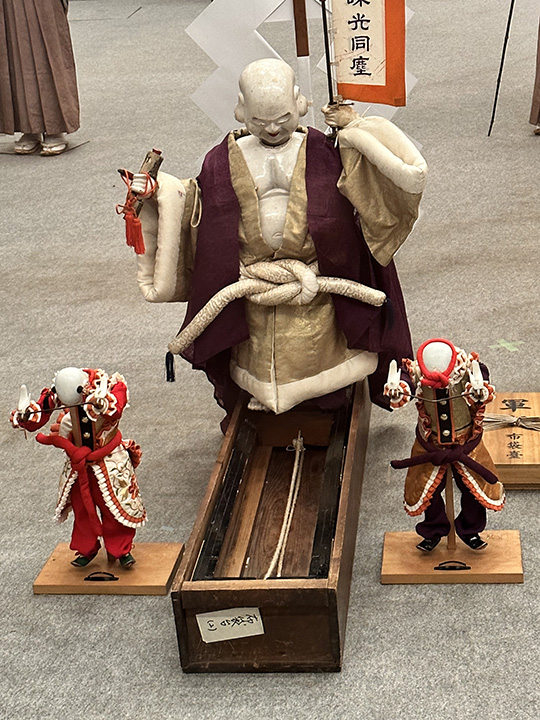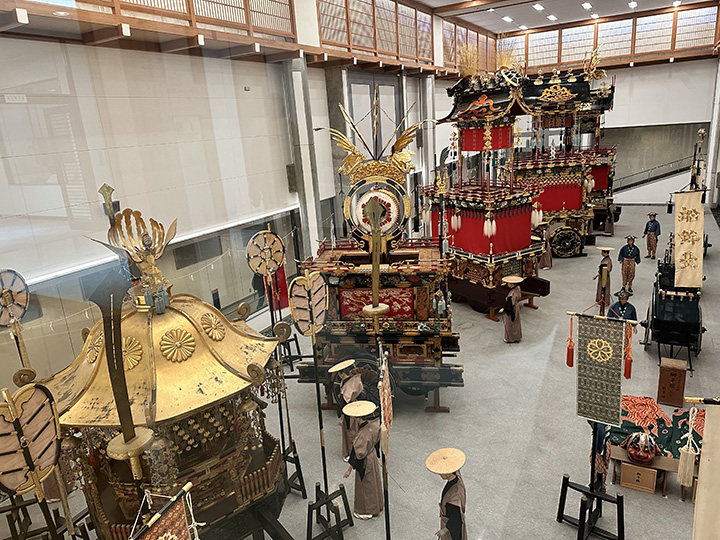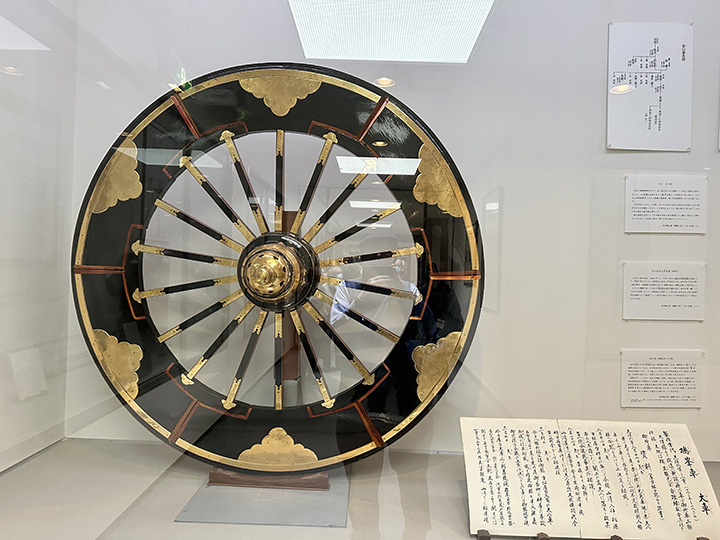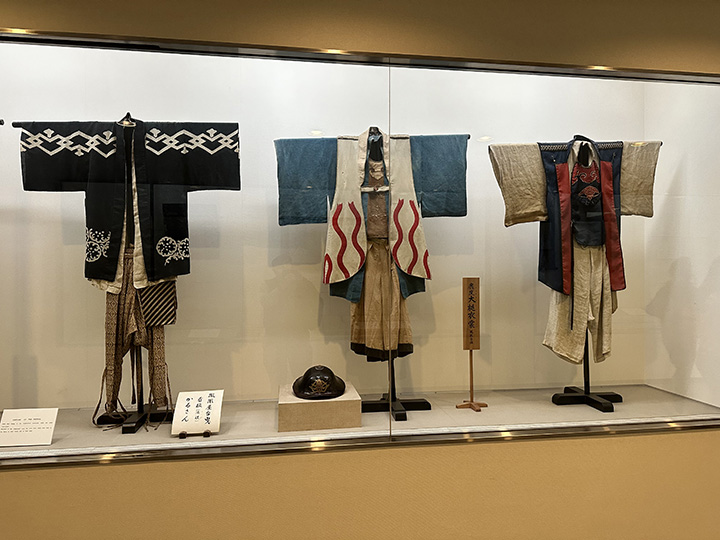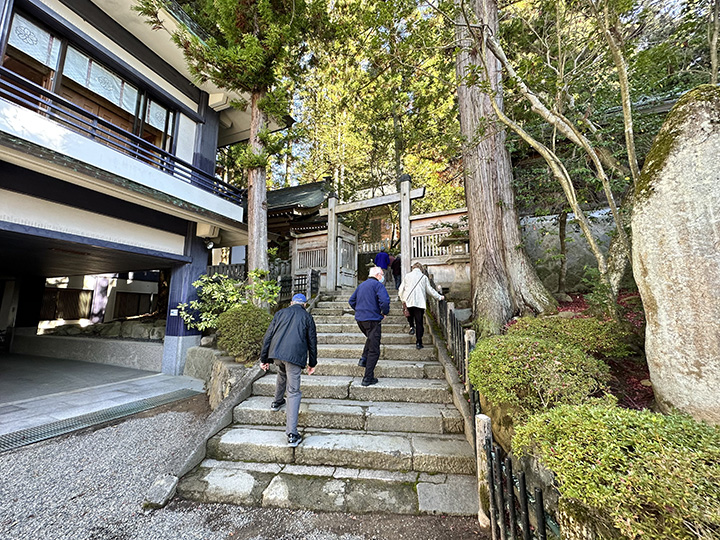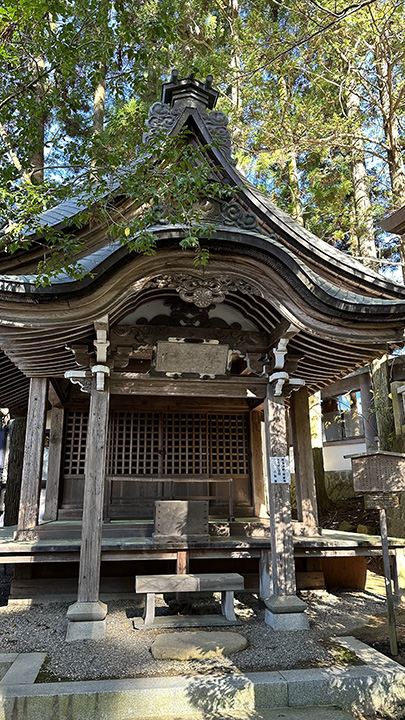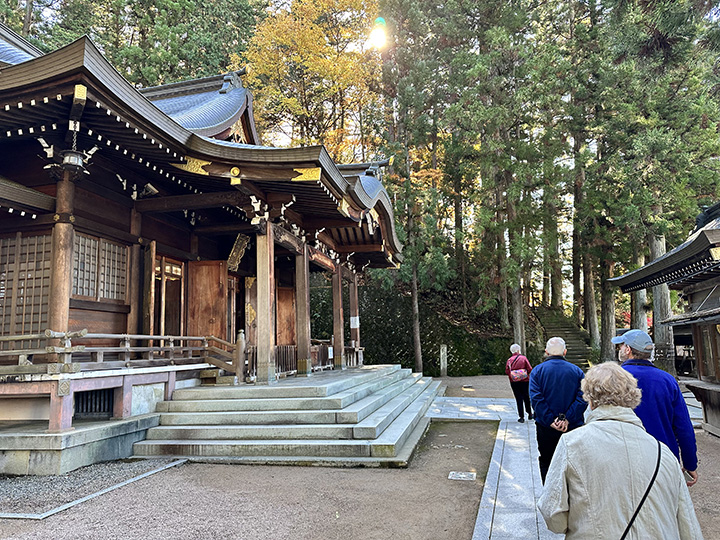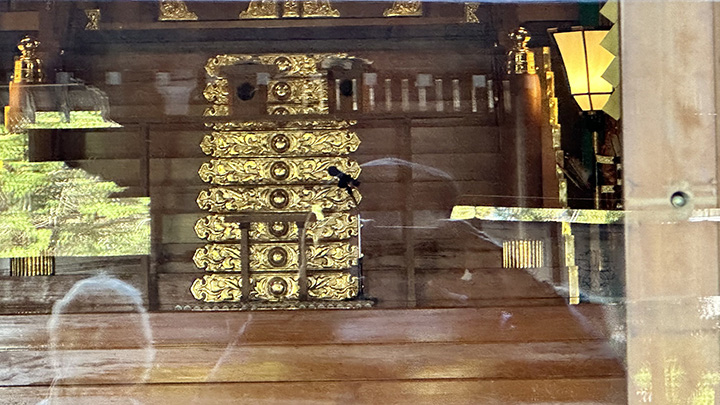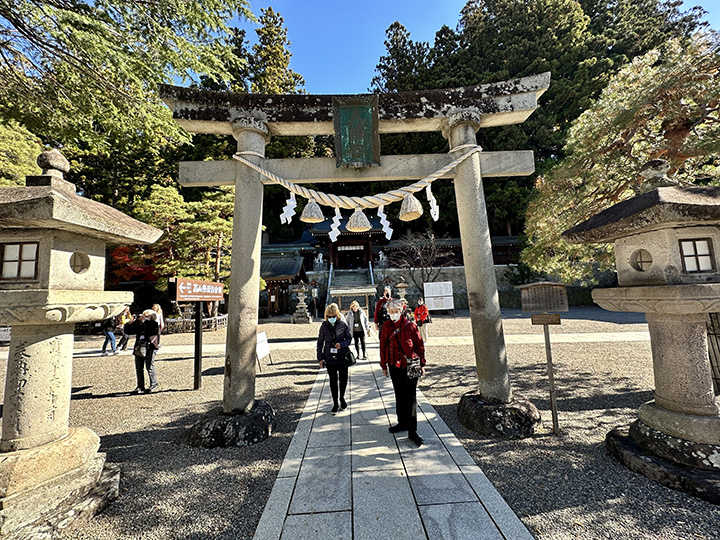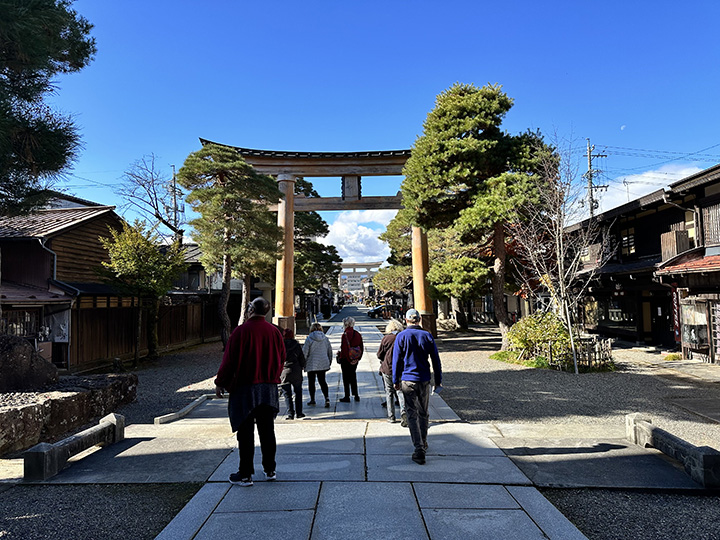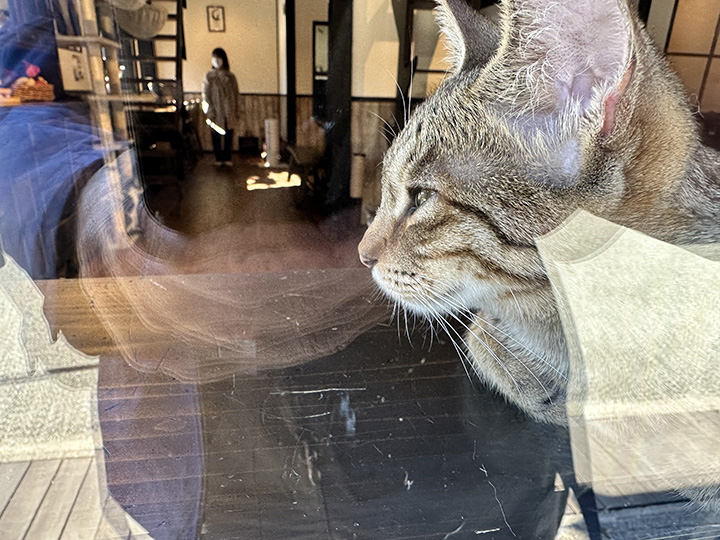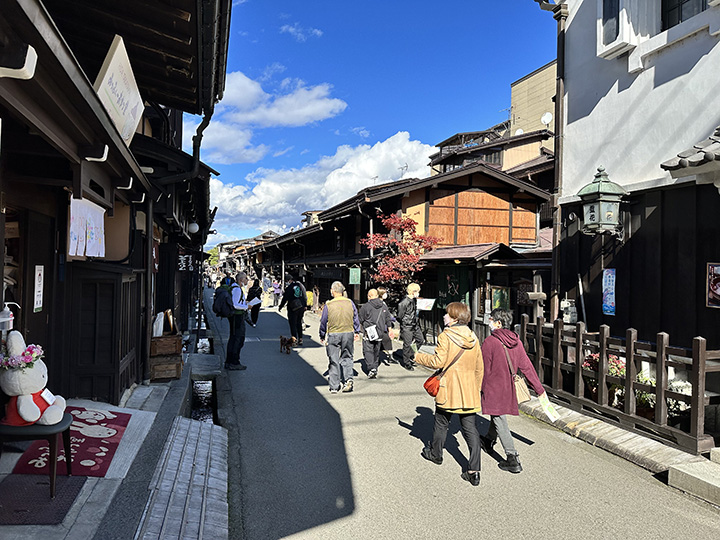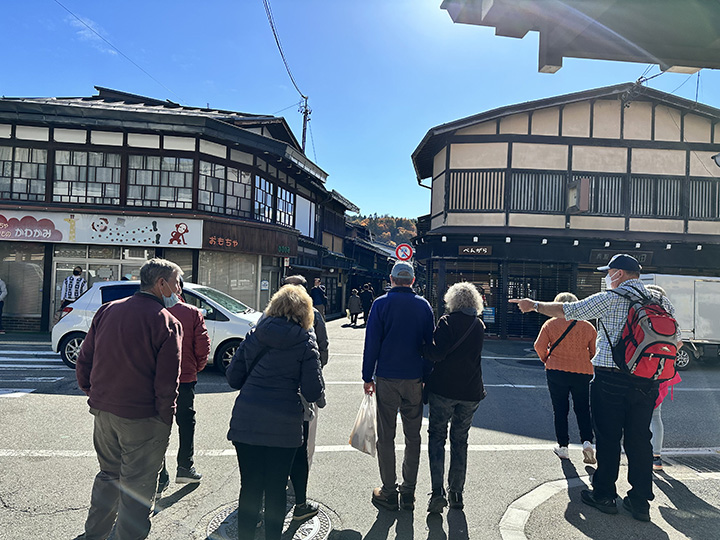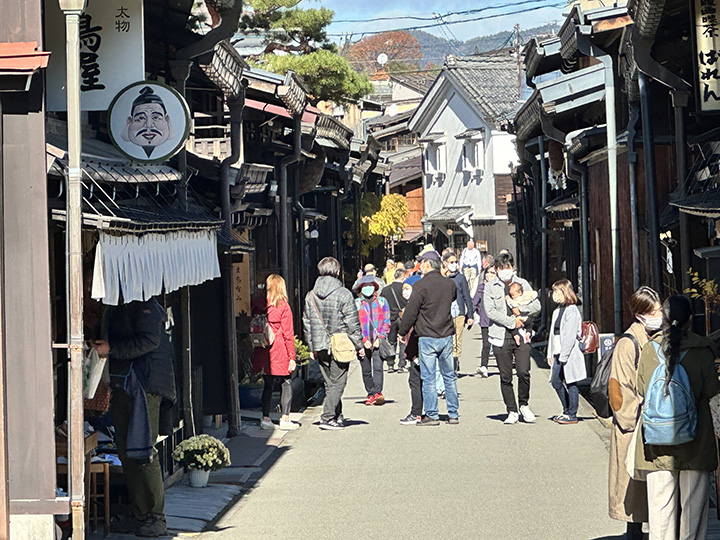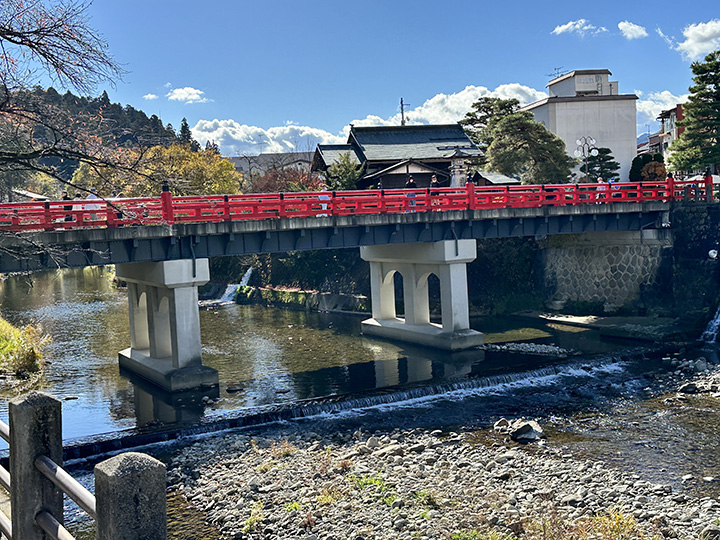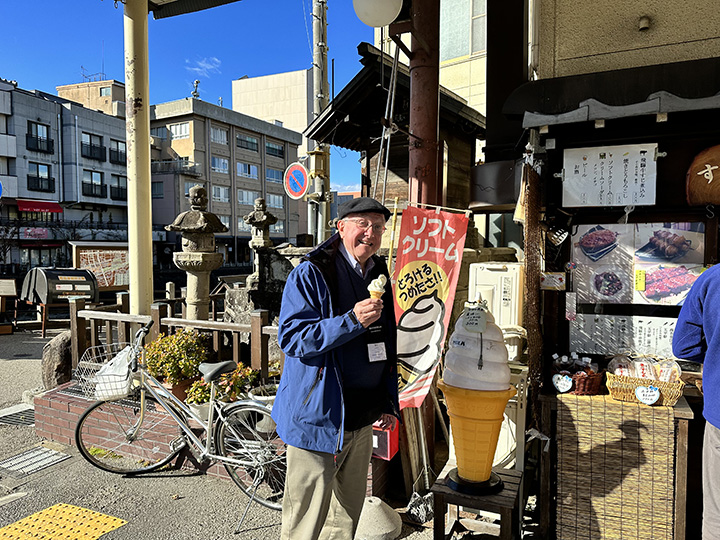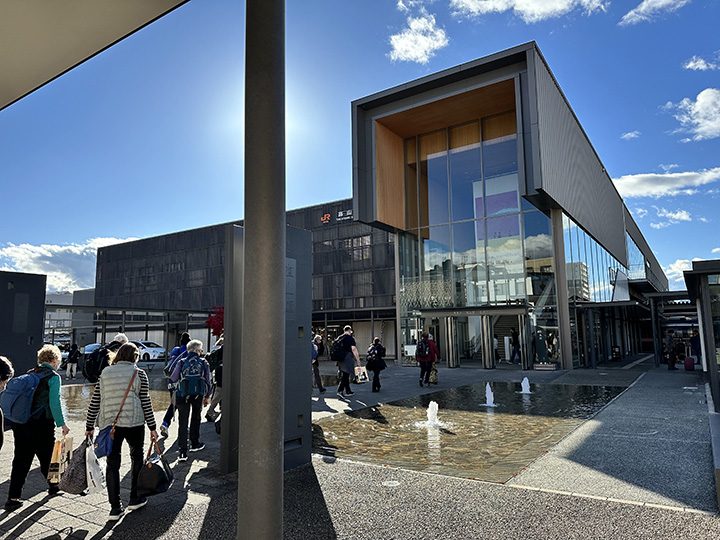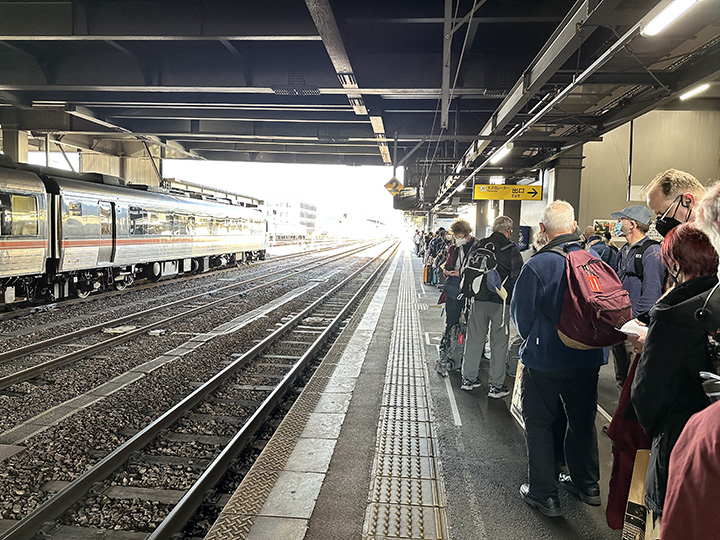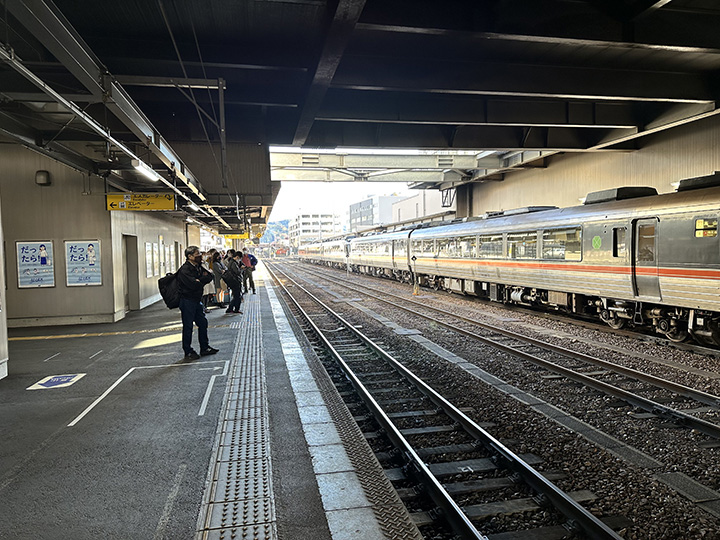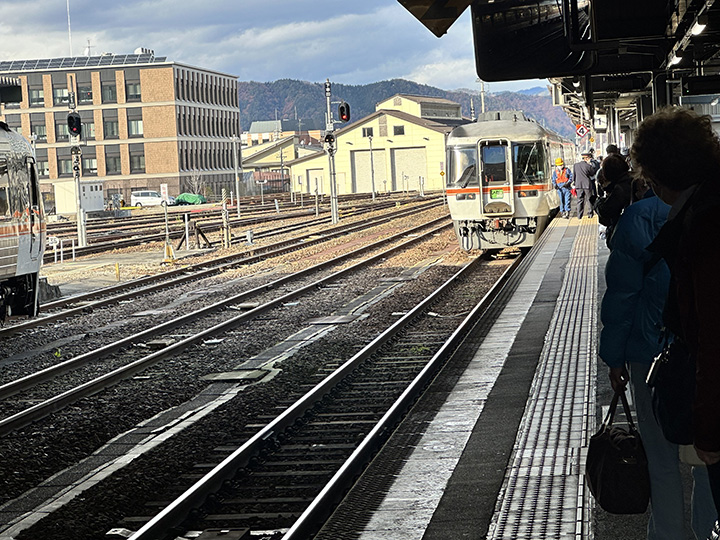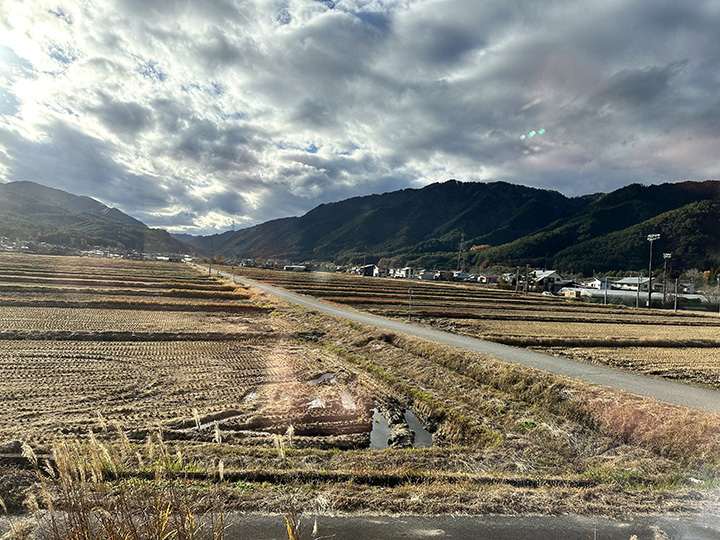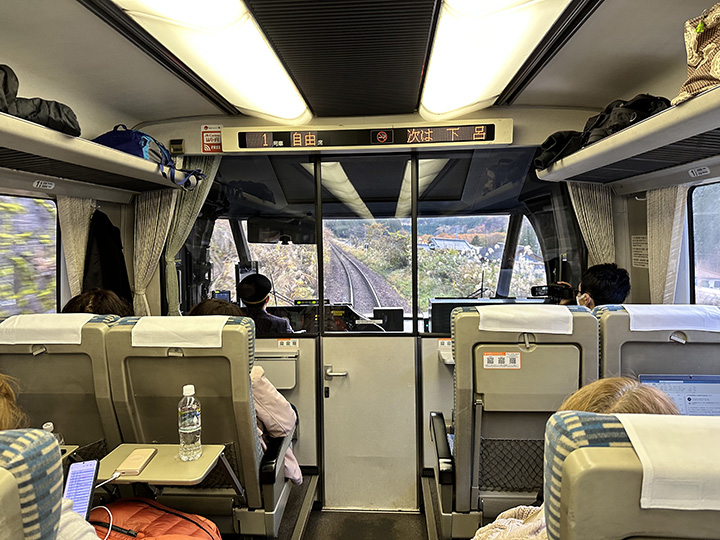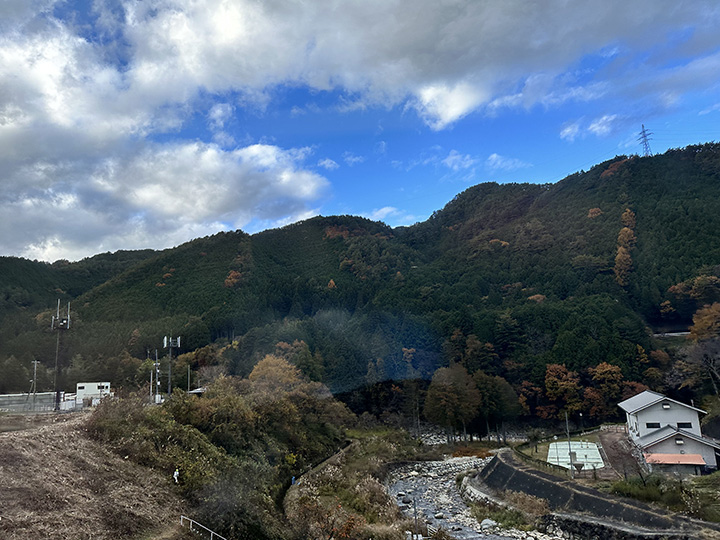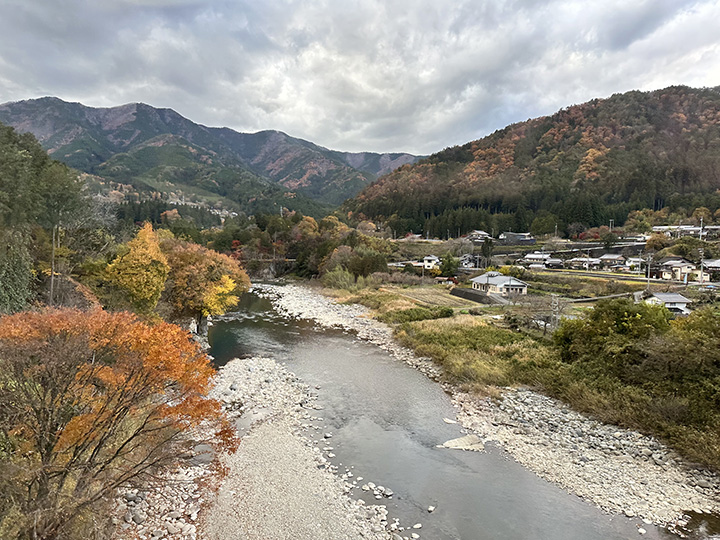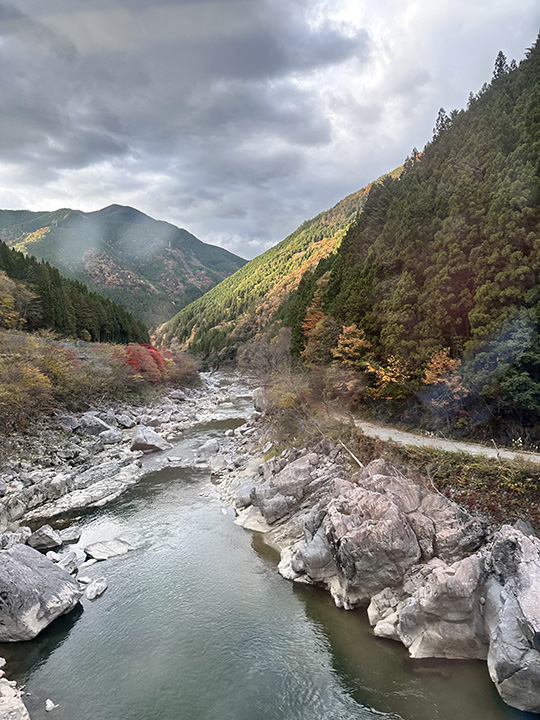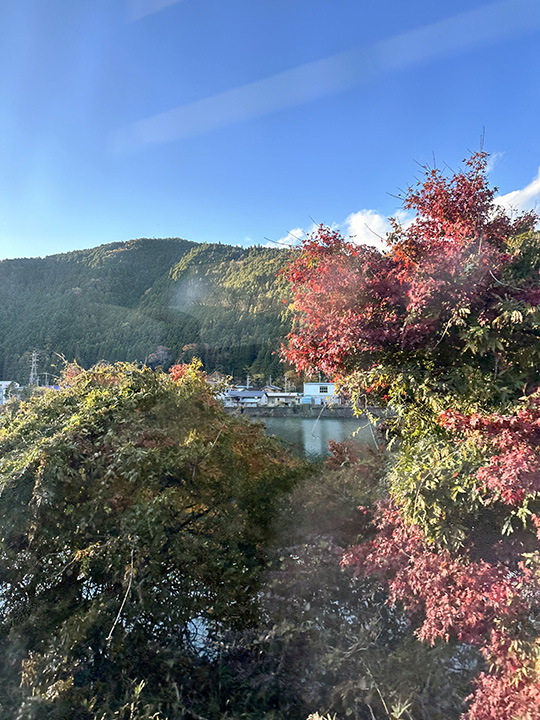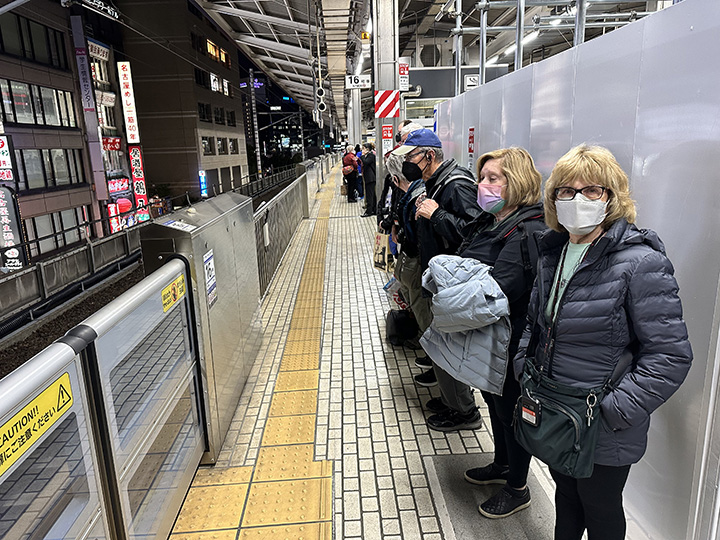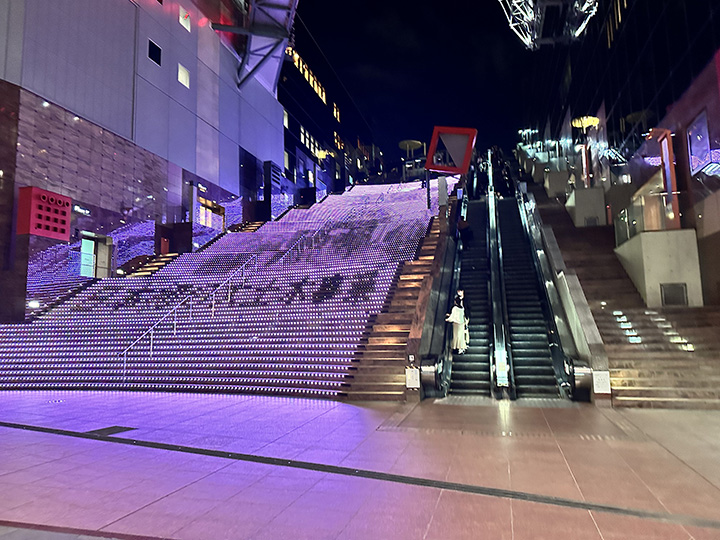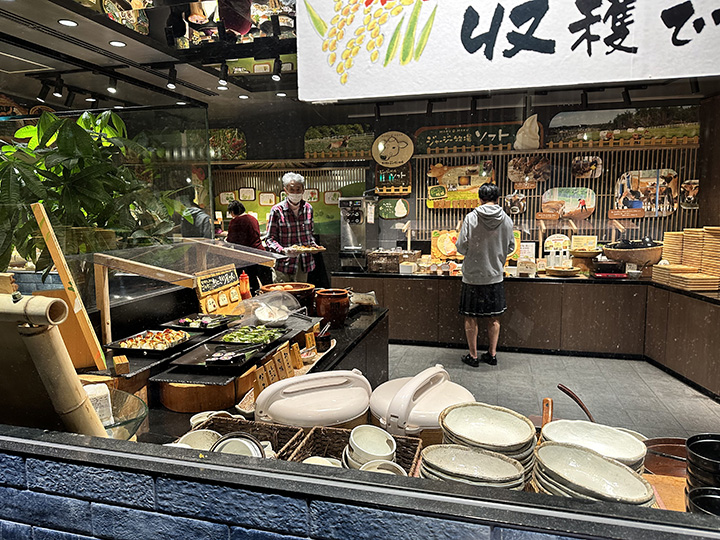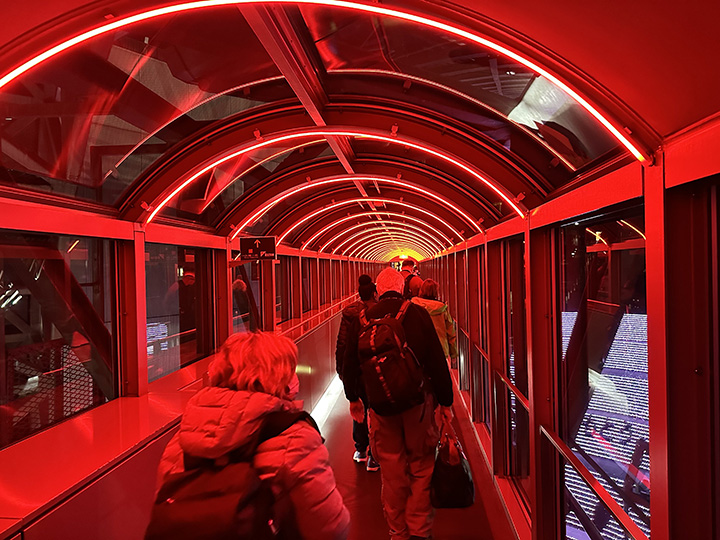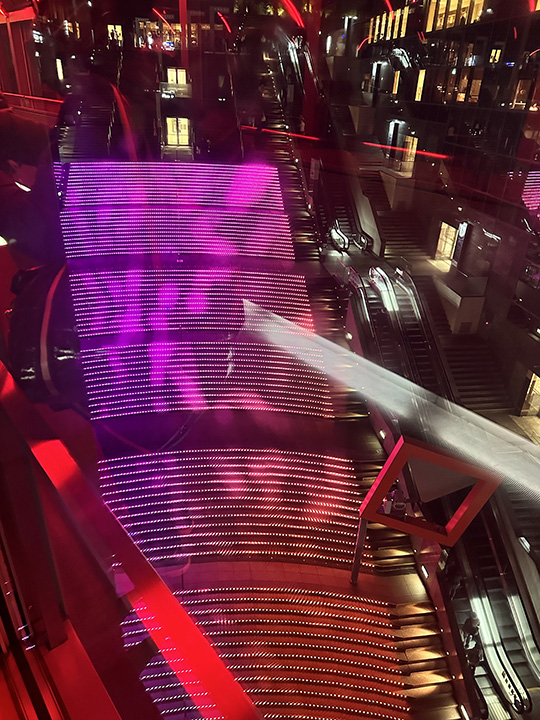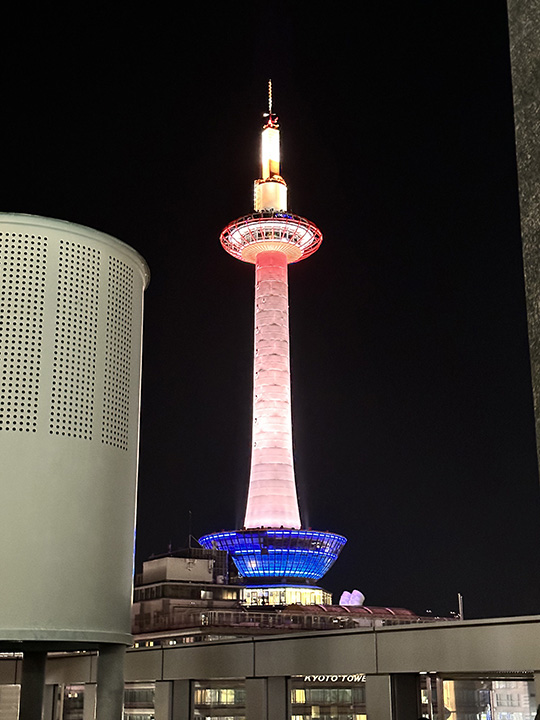|
Big day today. Lots of temples and shrines and walking and eating and riding trains and walking and eating and walking.
We have a very nice hotel in Takayama. The Chisun Grand.
We are gathered in front of the hotel in the brisk morning air.
As we walked along the sidewalk we discovered it is garbage collection day. Kathleen translated the sign which went something like, “Tuesdays are for items that can be burned. Wednesdays are for aluminum cans. Thursdays are for recyclables. It got very complicated.
We press onward.
That's a shrine.
And right beside it is a collection of dolls without faces. Kathleen says Takeyama is noted for these amulet dolls called sarubobo.
Traditionally, sarubobo are made by grandmothers for their grandchildren as dolls, and for their daughters as a charm for good marriage, good children and to ensure a well-rounded couple. Sarubobo literally translated from the Japanese as "a baby monkey".
These are called Jizo statues because he they resemble Jizo, also called O-Jizo-san or O-Jizo-sama, the guardian deity of children and travelers. Jizo statues can be made of clay, and bronze but are mostly carved out of stone. They can be found in many places, for example, at Buddhist temples, graveyards, and on the side of the road. Many Jizo statues wear red bibs and hoods. Since ancient times in Japan, red has been believed to ward off evil. Thus, some people put red bibs and hoods on Jizo to protect this guardian deity, and others who have lost their baby pray that the spirits can go to heaven without suffering.
We stopped by the Hida-Kokubunji Buddhist temple.
The
Shoku Nihongi, an imperially-commissioned Japanese history text
completed in 797, records that in 741, as the country recovered from
a major smallpox epidemic, Emperor Shomu ordered that a monastery
and nunnery be established in every province. They were called
Kokubun-ji.
It boosts a 1200 year old ginkgo tree in its courtyard.
The ginkgo biloba is the favorite tree of many a tree lover. It is considered a “living fossil” since its fossilized leaves (in an unusual fan shape) were found long before a living ginkgo was identified, making scientists believe the species to be extinct. Today, ginkgo trees thrive on all continents other than Antarctica and Australia.
Yep, 1,200 years sounds about right for this one.
The ginkgo has a reputation as a stinky tree, but in fact it's not the tree that stinks but its fruit which fall to the ground and rot. Interesting fact: the ginkgo is dioecious, which means a tree may be either male or female, and only the female trees grow fruit. See the expression on Bill's face? He's just learned this tree is male.
The 7-story pagoda also dates from the same period, burned down during the Ōei period and was reconstructed again in 1585. It was burned down again in the battles between Kanemori Nagachika and Anegakoji Yoritsuna and a 3-story pagoda was built in its place in 1615. This structure also burned down in 1791 and was rebuilt in 1820.
For the Japanese, the pagoda is not the focus of the temple complex as in China but seen as a separate accessory structure. Instead of being used as a meditation hall with a Buddha statue, pagodas serve as ceremonial space for holy artifacts and precious items, since they generally have very little interior space.
The top of the pagoda is pretty fancy.
There's the temple.
Hida Kokubun-ji is a Shingon-sect Buddhist temple in the Sowamachi neighborhood of the city of Takayama, Gifu, Japan. It is one of the few surviving provincial temples established by Emperor Shōmu during the Nara period (710 – 794). Due to this connection, the foundation stones of the Nara period pagoda located on temple grounds were designated as a National Historic Site in 1929.
Ginkgo and pagoda. Pretty nice sightseeing today.
Now let's go sightsee somewhere else.
Down by the Miyagawa River.
And on a bridge across the river are too very unusual figures. One has elongated legs.
And the other has elongated arms. Apparently they are characters in old Japanese folklore. One is Tenagazo (lit. hands-long-statue) and Ashinagazo (lit. feet/legs-long-statue). The story is that they cooperate in fishing together with Long-arms riding on Long-legs’ back. Long-legs wades into the river and Long-arms grabs all the fish.
There's a big torii down there by the river.
Very big. Maybe we'll see more of it later.
Looks like something going on over there.
We're going to have a look. There's good information in English but apparently there's something we mustn't do and I don't know what it is. Sure hope I don't do it.
At the end of the Edo period, Matsuda Sukenaga created original netsuke carvings using only the beautiful grain of the Hida area's characteristic Japanese yews without any additional color. This is said to be the beginning of Japanese yew carvings, or ichii ittobori, nationally designated as a traditional craft of Hida. This is a statue of Daikoku, one of the Seven Gods of Fortune. This god is said to be a fusion of the mythological creator of Japan, Okuninush no Mikoto, and an Indian god. He looks like a happy god.
To market, to market.
I could use a stroller myself about now.
There's plenty to buy here.
Fresh produce.
Hot produce.
Baffling produce.
This lady is making some pastries.
Which should I get...hmmm....
Kathleen the guide is an excellent photographer. I wonder what she's taking pictures of?
This, maybe?
This would be a good shot.
Or maybe this?
Do I have Japanese relatives who can't spell our name?
Bonsai!
There's a bridge across the river.
And do I see fish in the river?
Why yes, in fact I do.
And wouldn't you know the market sells koi food?
Lovely city.
With some very old buildings.
This one is interesting. It just looks like a poorly-designed garage, but in fact it conceals a pride of the neighborhood. There's a fancy ceremonial float inside that's used twice a year in citywide celebrations. We'll see examples of the floats later.
I know what they do in that building.
Here's a shrine with a pretty bush.
And there's that torii again, just up the street.
Big torii, little torii.
Up there is the Sakurayama Hachiman Shrine.
A Hachiman shrine is a Shinto shrine dedicated to the kami Hachiman. It is the second most numerous type of Shinto shrine after those dedicated to Inari Okami. There are about 44,000 Hachiman shrines.
In Japanese religion, Yahata, formerly in Shinto and later commonly known as Hachiman is the syncretic divinity of archery and war, incorporating elements from both Shinto and Buddhism.
Located on the grounds of the Hachiman Shrine is the Yatai Museum which features a hall containing four of the festival's eleven magnificent parade floats. Takayama sponsors two huge festivals each year, one in the spring to pray for a good harvest, and one in the fall to give thanks. The festivals are famous for the large ornate floats, or yatai, which roam around the city at night. The floats date back to the 17th century, and are decorated with intricate carvings of gilded wood and detailed metal-work.
Kathleen tells us all about the floats.
And then we get to see them for ourselves.
The elaborately decorated floats are several hundred years old and beautiful examples of Takayama's legendary craftsmanship.
These spectacular creations, some dating from the 17th century, are prized for their flamboyant carvings, metalwork and lacquer ware.
Beautiful.
Some floats feature karakuri ningyō (marionettes) that perform amazing feats at the hands of eight accomplished puppeteers manipulating 36 strings.
Here's a video of some video that shows the marionettes in action.
A rotating selection of four of the 23 multitiered yatai (floats) used in Takayama Matsuri can be appreciated here.
The festival is most famous for the way it looks at night.
Even the wheels of the floats are magnificent works of art.
As are the kimonos of the participants.
Now let's go have a look at that shrine.
The origins of Sakurayama Hachimangu Shrine date from the time of the Emperor Nintoku (413 - 439), when he requested Prince Takefurukuma-no-mikoto to subjugate the monster Ryoumen Sukuna, an incredible beast with 2 heads, 4 arms and 4 legs.
Before undertaking his task, the warrior
enshrined his father, the Emperor Ojin as the deity of this
sanctuary, and prayed for the success of his mission.
The current shrine buildings have an attractive unpainted wood design and are surrounded by large trees.
More than 1,500,000 people visit the shrine annually.
It's a small shrine that's normally quiet.
Most of the Road Scholars are being careful not to walk down the center of the path because that space is used by the gods. Is that Suzanne back there in the middle of the road?
There's a bell up there.
We're getting hungry. Let's go find lunch. And somebody tell Kathleen to get out of the way of the gods.
It's another cat cafe!
Lots of the Road Scholars thought sharing meals with cats sounded like a great idea, but I noticed nobody actually tried it.
We're on our own now, looking for a place to eat.
Do we want more raw fish?
Lots of fine Japanese restaurants around here, but let's keep looking.
Maybe over that bridge.
Does any establishment around here sell normal food?
I think we're onto something.
Hamburger and fries with ketchup. Ahhhhh....
Followed by an ice cream cone. Bill is blissed.
We've picked up our bags and we're headed for the train station.
We wait and wait. Nothing coming this way.
Nothing coming that way.
But wait...a train has arrived but it isn't coming to pick us up.
Instead, another train is coming from the opposite direction on the same track!
Here's video of how it all came together.
Turns out we got one of the newly attached cars that a little earlier had been traveling in the opposite direction and all the seats were facing the wrong direction. So what do we do?
Now that all that's been straightened out, let's go to Kyoto.
Lots of fields to see, as usual.
And scenic sights.
I heard that on this train you could look forward over the engineer's shoulder, and not wanting to miss out on anything I just marched right up into the first class section.
I didn't want to annoy anybody so I just snapped a quick picture. But Don was bolder and thanks to him we have video of what it would have been like to have a front row seat on this train.
At least the scenery is nice.
And colorful.
And nice and colorful.
If you have to sit on a train traveling through beautiful scenery, you may as well take some pictures.
This is pretty.
And that is pretty.
And so is that. Maybe some video will be a nice change of pace.
Let's watch the scenery pass by.
OK, enough.
Let's get out of here on a bullet train.
I think we see one coming now.
Remember that early scene in the first Star Wars movie when the Imperial Star Cruiser appeared and began passing by and kept passing by and more and more and it was almost funny how long the thing was? Well that an Imperial Star Cruiser has nothing on a Shinkansen.
And it's speedy, too. There's a website you can visit on an iPhone that'll tell you how fast you're going. The Shinkansen really hustles along the line.
Now we have arrived in Kyoto. Kyoto Station is a major railway station and transportation hub in Kyoto, Japan. It has Japan's second-largest station building (after Nagoya Station) and is one of the country's largest buildings, incorporating a shopping mall, hotel, movie theater, Isetan department store, and several local government facilities under one 15-story roof.
The current Kyoto Station opened in 1997, commemorating Kyoto's 1,200th anniversary. It is 70 meters high and 470 meters from east to west, with a total floor area of 238,000 square meters. Architecturally, it exhibits many characteristics of futurism, with a slightly irregular cubic façade of plate glass over a steel frame. The architect was Hiroshi Hara.
The LEDs embedded in that staircase's steps can really put on a show.
Kyoto, one of the least modern cities in Japan by virtue of its many cultural heritage sites, was largely reluctant to accept such an ambitious structure in the mid-1990s. But Kathleen says pretty much everybody likes it now.
Tonight we'll eat at a buffet.
Buffalo wings, potato salad, pork cutlets, salad, real bread and pound cake. Ahhhh....
There was a spooky walkway to the other side of the terminal.
And then there were the lights.
Want to see that amazing staircase in animated action?
Kathleen pretty much dismissed the Kyoto Tower as a gimmick for tourists to view the city. We didn't go up in it. Maybe next time.
|


